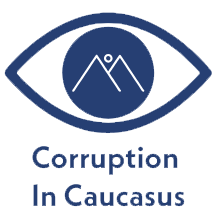Azerbaijan has recently enacted significant amendments to its anti-corruption legislation, signaling a more structured approach to combating corruption within the country.
Key Definitions and Concepts
The revised law provides clear definitions for critical terms:
- Corruption: Defined as the illegal solicitation or acceptance of material and other benefits, privileges, or concessions by officials, leveraging their official status, the status of the organization they represent, their official powers, or the opportunities that arise from these powers and statuses. It also includes accepting offers or promises related to these benefits. Additionally, it encompasses the illegal offering or promise of such material benefits, privileges, or concessions by individuals or legal entities to officials.
- Corruption Risk: The likelihood of committing corruption offenses or engaging in actions that create conditions conducive to corruption.
- Corruption Risk Management: Involves identifying corruption risks and setting objectives to mitigate these risks. It includes analyzing, assessing, and implementing measures to prevent and control these risks.
- Authorized Structural Unit (Person): Refers to one or more designated units or individuals tasked with receiving and investigating reports of corruption-related offenses. They also provide confidential guidance on conflict of interest and corruption prevention matters, as well as oversee the management of corruption risks.
Organizational Responsibilities
Under the new amendments, the head of each organization or body is responsible for designating an authorized structural unit or individual to manage corruption risks. These units are tasked with receiving and investigating reports of corruption-related offenses, providing confidential guidance on conflict of interest and corruption prevention matters, and overseeing the management of corruption risks. Specialists with expertise in areas requiring specialized knowledge may also be involved in the corruption risk management process.
Organizations are required to conduct an identification, analysis, and assessment of corruption risks for the previous year between January 15 and April 15 annually. Based on the summary of complaints received regarding corruption-related offenses, the unit or subordinate organization that receives the highest number of such complaints may, at the discretion of the head of the organization, conduct additional risk assessments during other periods.
Risk Assessment Factors
In identifying, analyzing, and assessing corruption risks, the following factors are considered:
- Results of surveys conducted among legal entities and individuals.
- Applications received regarding corruption-related offenses and the outcomes of investigations based on these applications.
Additionally, the following information is considered in the identification of corruption risks:
- Information disseminated through the media, internet-based resources, or telecommunication networks, where the source is known.
- Legal acts regulating the activities of the organization.
- Results of state financial control measures, external state financial audits, or both mandatory and voluntary audits.
- Circumstances inherent to the organization’s activities that foster conditions conducive to frequent corruption.
- The number and nature of administrative disputes handled in administrative court proceedings related to the organization’s operations.
Reporting and Oversight
By June 1 each year, organizations must submit a report to the Commission detailing corruption risks, targets set to address these risks, results of risk assessments, and measures taken during the current year. This report should also include information about actions taken regarding measures established in the previous year. The Commission may analyze the submitted information and offer recommendations to the relevant body on managing corruption risks and suggestions for enhancing anti-corruption legislation.
Whistleblower Protections
The amendments provide protections for employees who report corruption-related offenses. Such individuals shall not face any direct or indirect retaliatory measures, including disciplinary actions, termination of employment, dismissal, reassignment, unlawful salary deductions, obstruction of promotion, negative evaluations, or similar actions. If an individual providing information on corruption-related offenses can present evidence of such retaliatory actions, the employer is responsible for disproving the claim. Individuals who believe they have been subjected to retaliatory actions have the right to seek redress from the relevant superior authority or the courts to restore their violated rights.
These amendments represent a comprehensive effort by Azerbaijan to strengthen its anti-corruption framework, emphasizing transparency, accountability, and protection for those who expose corrupt practices.

